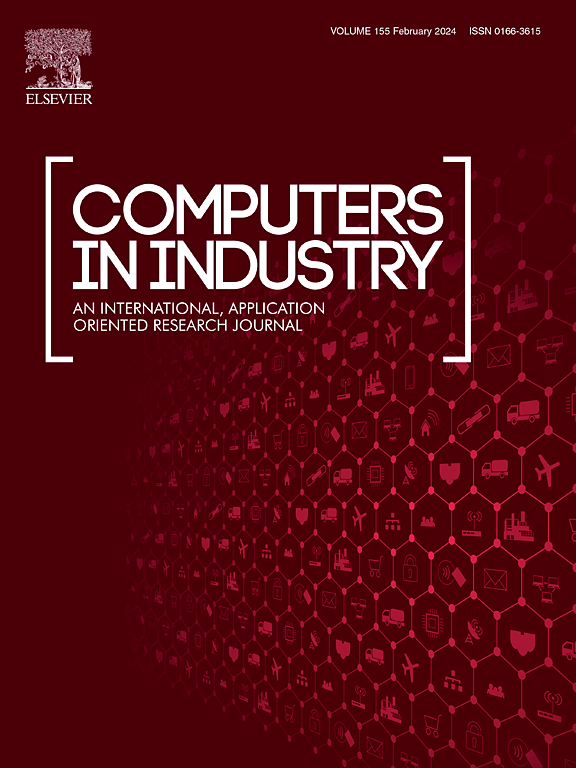Deep hierarchical sorting networks for fault diagnosis of aero-engines
IF 8.2
1区 计算机科学
Q1 COMPUTER SCIENCE, INTERDISCIPLINARY APPLICATIONS
引用次数: 0
Abstract
In modern industry, timely health assessments of aero-engines are crucial for ensuring their proper functionality and the safety of aviation operations. However, during the collection of operating data for aero-engines, influential fault features may exhibit hysteresis or even overwhelmed due to transmission delays in some sensors. Furthermore, these features in the data at interval points are difficult to extract using traditional deep neural networks. Moreover, in aero-engine fault diagnosis, the number of normal samples is significantly higher than that of fault samples. As a result, traditional deep neural networks tend to focus on normal samples while fault samples are neglected, increasing the risk of missed diagnoses or misdiagnoses. To address these problems, this paper proposes a parallel convolutional neural network based on hierarchical sorting of state points (FSHSM-PCNN), to improve the synergistic effect between state point data at different hierarchical levels via the hierarchical sorting module, and to efficiently extract fault information via the parallel convolutional neural network. First, the state point data in the original samples is internally sorted along the time dimension by the fault significance-based hierarchical sorting module (FSHSM), and the different levels of state point data obtained after sorting reveal a reinforced synergistic effect. Second, a parallel convolutional neural network is developed to extract temporal status features and reinforced synergistic features, and the fused information is used for fault diagnosis. Finally, the performance of the proposed FSHSM-PCNN is evaluated using actual monitoring data from aero-engines. The experimental results show that the proposed method is effective in extracting fault features from the monitoring data. Compared to other methods in the ablation study, the proposed method improves average performance in aero-engine fault diagnosis by 12.46 %, 7.07 %, and 12.62 %, respectively. In diagnosis tasks with imbalanced datasets, its accuracy exceeds that of other methods by at least 5.01 %.
航空发动机故障诊断的深度层次分类网络
在现代工业中,对航空发动机进行及时的健康评估对于确保其正常功能和航空运行安全至关重要。然而,在航空发动机的运行数据采集过程中,由于某些传感器的传输延迟,影响故障特征可能会出现滞后甚至被淹没。此外,传统的深度神经网络难以提取间隔点数据中的这些特征。此外,在航空发动机故障诊断中,正常样本的数量明显高于故障样本的数量。因此,传统的深度神经网络往往只关注正常样本,而忽略了故障样本,增加了漏诊或误诊的风险。针对这些问题,本文提出了一种基于状态点分层排序的并行卷积神经网络(FSHSM-PCNN),通过分层排序模块提高不同层次状态点数据之间的协同效果,并通过并行卷积神经网络高效提取故障信息。首先,通过基于故障显著性的分层排序模块(FSHSM)对原始样本中的状态点数据沿时间维度进行内部排序,排序后得到的不同层次的状态点数据显示出增强的协同效应。其次,利用并行卷积神经网络提取时间状态特征和增强协同特征,将融合后的信息用于故障诊断;最后,利用航空发动机的实际监测数据对所提出的FSHSM-PCNN进行了性能评估。实验结果表明,该方法能够有效地从监测数据中提取故障特征。与烧蚀研究中的其他方法相比,所提出的方法在航空发动机故障诊断中的平均性能分别提高了12.46 %、7.07 %和12.62 %。在不平衡数据集的诊断任务中,其准确率超过其他方法至少5.01 %。
本文章由计算机程序翻译,如有差异,请以英文原文为准。
求助全文
约1分钟内获得全文
求助全文
来源期刊

Computers in Industry
工程技术-计算机:跨学科应用
CiteScore
18.90
自引率
8.00%
发文量
152
审稿时长
22 days
期刊介绍:
The objective of Computers in Industry is to present original, high-quality, application-oriented research papers that:
• Illuminate emerging trends and possibilities in the utilization of Information and Communication Technology in industry;
• Establish connections or integrations across various technology domains within the expansive realm of computer applications for industry;
• Foster connections or integrations across diverse application areas of ICT in industry.
 求助内容:
求助内容: 应助结果提醒方式:
应助结果提醒方式:


